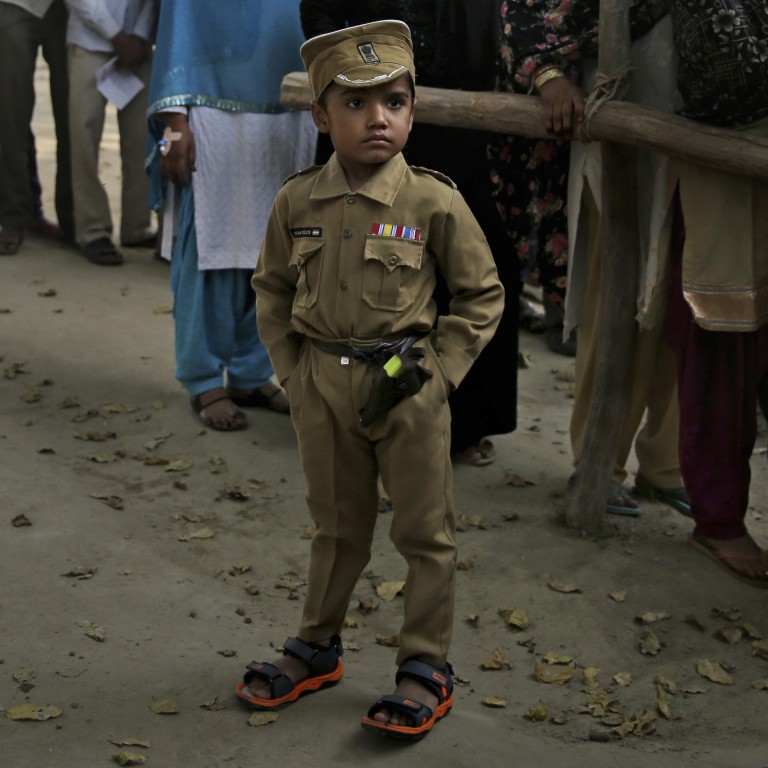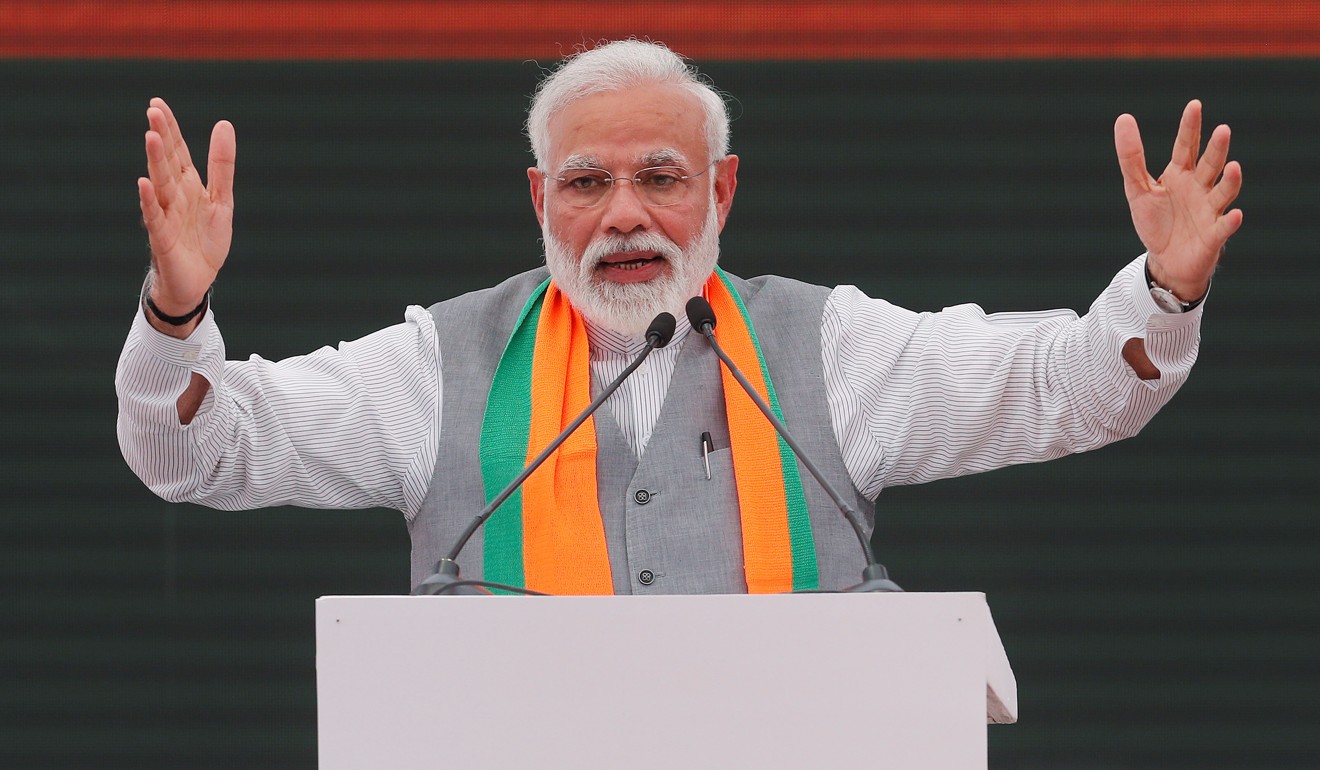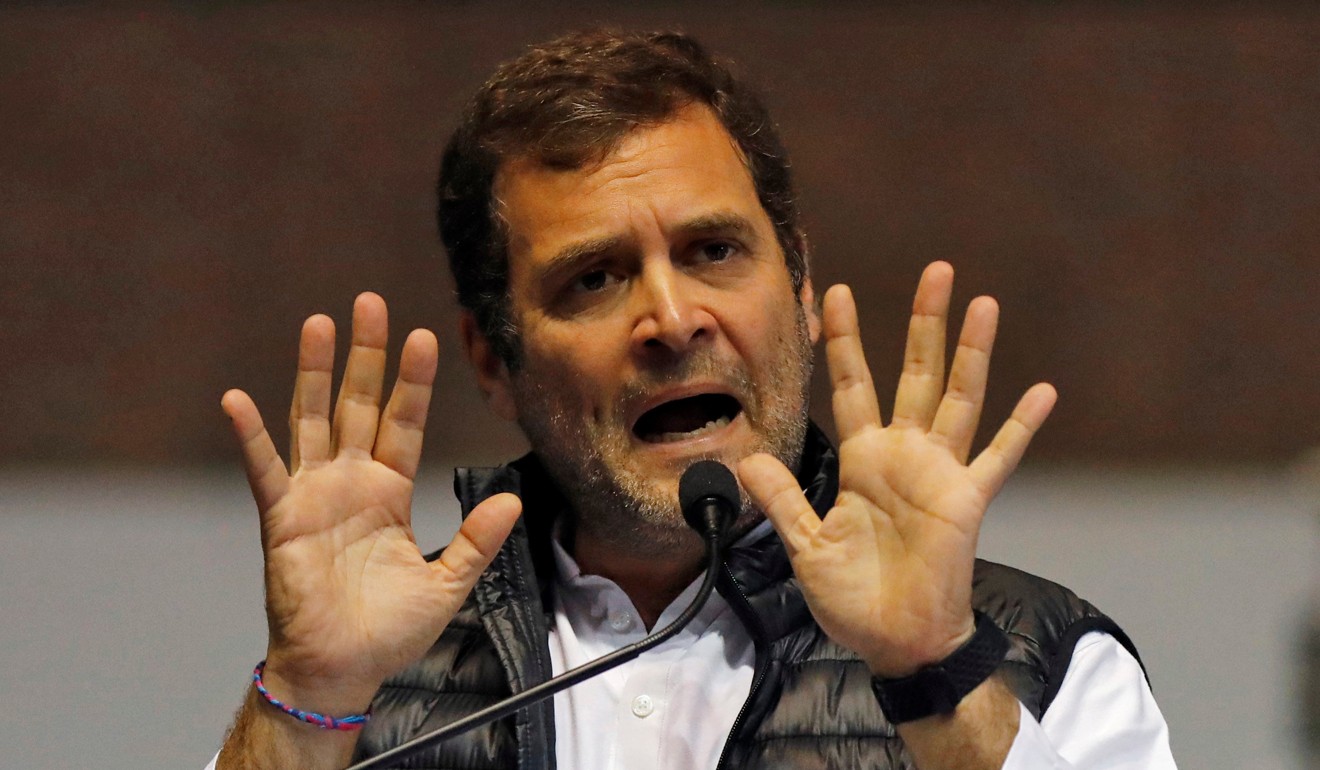
India election: a death, a bomb and voting machine malfunctions mar first day of polls
- Country begins mammoth election process in which up to 900 million people are eligible to cast a ballot
- At least one politician has been killed in a dispute over a state assembly vote, while Maoist rebels have been blamed for a bomb near a polling booth
More than 140 million of the country’s nearly 900 million-strong electorate were eligible to vote on the first day of a seven-phase polling exercise that will culminate on May 23 with the declaration of results for all 543 Lok Sabha, or House of the People, seats. Ninety-one seats were up for grabs on the first day of voting.
Meanwhile, elections for state assemblies were being held simultaneously in Odisha, Sikkim, Arunachal Pradesh and in Andhra Pradesh, where the highly-charged proceedings saw a member of the ruling Telugu Desam Party killed, and a Jana Sena party candidate arrested for destroying an electronic voting machine after an argument with polling officials.
India’s election will test limits of Narendra Modi’s populism, but he’s still in the box seat
Chinta Bhaskar Reddy died after a clash with YSR Congress Party members in Tadipatri state assembly constituency of Anantapur district. Some YSRCP members were also injured in the clash.

There were also reports that the banned Communist Party of India (Maoist) had carried out two attacks in Chhattisgarh’s Narayanpur district. One Maoist was reportedly killed when security personnel guarding a helipad returned fire. Maoists were also blamed for an improvised explosive device (IED) that went off near a polling booth in Gadchiroli district. Nobody was hurt in the incident.
Meanwhile, in Uttar Pradesh’s Kairana, security personnel guarding a polling booth had to fire in the air to disperse a crowd of 25-30 people who tried to vote without possessing proper identification.
Across the constituencies there were hundreds of complaints about malfunctioning electronic voting machines.
India election: Modi, Gandhi and the Chinese dragon in the room
Andhra Pradesh Chief Minister N Chandrababu Naidu claimed there were 157 instances of voting machines malfunctioning, while Omar Abdullah, former chief minister of Jammu and Kashmir, tweeted that the button for voting for the main opposition party, Indian National Congress, had not been working in Poonch polling stations.
Meanwhile in Delhi, Chief Minister Arvind Kejriwal said he had received reports from across the country that voters’ names had been deleted from electoral rolls “on an unprecedented scale”.
Shobana Kamineni, executive vice-chair of Apollo Hospitals, said this had happened to her when she arrived to vote in Hyderabad. “This is the worst day for me as an Indian citizen,” said Kamineni, who had cut short a foreign trip to vote.

Pre-poll surveys have been mixed, with some suggesting Modi will return to power and others indicating a hung parliament with none of the parties claiming an absolute majority.
Early estimates of voter turnout suggested far fewer had cast ballots than in 2014.
Modi’s opposition, led by Congress, has campaigned on low levels of employment, but surveys show the electorate is yet to blame the issue on the BJP government.
“I urge young and first-time voters to vote in large numbers,” Modi tweeted shortly before polls opened at 7am.
The tweet was the latest in a series of efforts by the BJP to reach out to the approximately 81 million voters who will be eligible to vote in their first parliamentary election. On Tuesday, the BJP began using the hashtag #MyFirstVoteForModi across its social media accounts.
The opposition has also criticised the BJP, which has been campaigning on a nationalistic platform, for appealing to first time voters to dedicate their votes to military personnel.
“Lies. Lies. Lies. Distrust. Violence. HATE. Fear. You vote today for the soul of India. For her future. Vote wisely,” tweeted Rahul Gandhi, leader of Congress.
BELLWETHER
The BJP, which in 2014 won 32 of the 91 constituencies that went to the polling booth on Thursday, will keenly follow what happens to the eight seats in western Uttar Pradesh.
In 2014, the party won all eight seats and the victories were seen as a major factor in the party being able to form the government. Throughout the state, the BJP won 71 of the available 80 seats, a significant percentage of its final tally of 282 seats.

But this time around, Modi’s party faces a formidable challenge in Uttar Pradesh: a “grand alliance” led by the erstwhile enemies Samajwadi party and Bahujan Samaj Party, which are campaigning along caste lines. And Congress, while not part of the grand alliance, has fielded strong candidates, meaning a split vote could eat further into the BJP’s votebanks.
Sectarian riots in 2013 in Muzaffarnagar, Uttar Pradesh, that left 62 people dead were credited with helping to propel Modi to power last time around. This time, Muzaffarnagar will see a fight between BJP’s Sanjeev Balyan and Rashtriya Lok Dal founder Ajit Singh, both Hindu Jats.
That did not stop the Balyan from attempting to polarise the communities. He alleged the faces of women wearing burkas were not being checked at voting booths and that this was being exploited by people so that they could vote multiple times.
Gandhi to cow vigilantes, fake news and ‘watchman’ Modi: India’s election explained
Balyan, who won with a majority of 400,000 votes in 2014, said he would demand a recount if his concerns weren’t addressed. But Chief Electoral Officer L Venkateshwarlu refuted Balyan’s claims. “Wherever there are burqa-clad women voters, women poll officials are posted to ascertain their identity,” he told news agency Press Trust of India.
Modi spent the day addressing three election rallies in Assam, where five of the state’s 14 Lok Sabha states were being voted on. Congress president Gandhi and his sister Priyanka accompanied their mother Sonia to file her nomination papers in Uttar Pradesh’s Raebareli.

